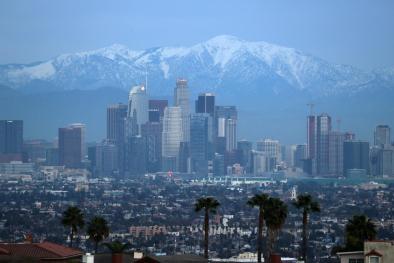Science Source
Increased Interannual Precipitation Extremes over California under Climate Change
- Analyzes changes to mean and extreme wet season precipitation over California on interannual time scales using twenty-first-century precipitation data from 34 global climate models
- Finds that models disagree on the sign of projected changes in mean precipitation, although in most models the change is very small compared to historical and simulated levels of interannual variability
- Finds that for the 2020/21–2059/60 period, there is no projected increase in the frequency of extremely dry wet seasons in the ensemble mean
- Finds that wet extremes are found to increase to around 2 times the historical frequency, which is statistically significant at the 95% level (stronger signals emerge in the 2060/61–2099/2100 period)
- Finds that, across all models, extremely dry wet seasons are roughly 1.5 to 2 times more common, and wet extremes generally triple in their historical frequency (statistically significant)
- Examines evidence from models and observations to understand the causes of the low precipitation associated with the 2013/14 drought in California
- Finds that these lines of evidence all strongly indicate that the low 2013/14 wet season precipitation total can be very likely attributed to natural variability, in spite of the projected future changes in extremes
Related Content
Headline

Feb 14, 2019 | The Weather Channel
California Rain Triggers Evacuations, Mudslides; Woman Rescued from Sausalito Home
Headline

Feb 14, 2019 | Reuters
Mudslide risk from California storm forces hundreds to evacuate
Headline

Feb 13, 2019 | San Francisco Chronicle
Heavy storms shuts down SFO flights, floods roadways across region
Headline

Feb 13, 2019 | LA Times
As atmospheric rivers pound California, here comes the season’s ‘biggest storm’


